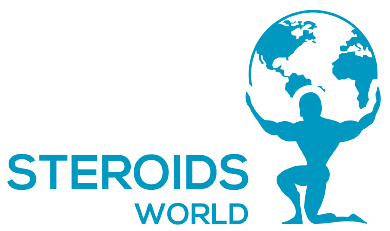Gynecomastia is a disorder that affects male patients and is defined by the growth and expansion of breast tissue. It can happen briefly in infants and affects at least 50% of teenage boys throughout puberty, albeit 75% of these instances go away on their own within two years. Another typical negative effect of steroid use is gynecomastia. Elevated androgen levels also result in elevated oestrogen levels in the body. This implies that, in addition to encouraging traditionally masculine traits like big muscles and improved power, feminine traits like breasts might also appear.

Gynecomastia’s Image in the Public Mind
The impression of others is the main adverse effect of gynecomastia. Gynecomastia is primarily a cosmetic issue, except for any mild discomfort or sensitivity. In the bodybuilding community, attractiveness is highly valued. This is especially true in the case of bodybuilding competitions. Because of this, gynecomastia is discussed in a rather disparaging way. Gynecomastia is frequently referred to as “moobs,” a portmanteau of “man boobs,” “bitch tits,” or simply “gyno.” Gynecomastia is believed to be bodybuilders’ greatest nightmare.
Signs of Gynecomastia
Gynecomastia results from a change in the body’s androgen-to-oestrogen ratio in men. The most noticeable characteristic is rubbery or stiff chest tissue that extends from the nipple/areola. Growth may take place on one side or both, and it can lead to a lot of worry and anxiety. Gynecomastia may also be indicated by a notable increase in the diameter or asymmetry of the chest tissues. An ignorant observer may occasionally mistake gynecomastia for breast cancer. While gynecomastia is painful and ugly, it is also benign.
Prevention
Gynecomastia is caused by elevated oestrogen, as was already established. This is something that extended steroid usage may readily cause in athletes and bodybuilders. Steroid users take anti-estrogen and/or aromatase inhibitor drugs to prevent gynecomastia and other negative effects. Using drugs like Clomid, Nolvadex, and Femera can reduce the body’s synthesis of estrogenic chemicals as well as their negative consequences. These drugs are perfect for slowing down or stopping the growth of breast tissue since many of them were created to treat breast cancer.
Therapy Alternatives
Gynecomastia therapy mainly focuses on anti-oestrogen drugs such as SERMs (Selective Estrogen Receptor Modulators) and aromatase inhibitors are used to control and manage the amounts of oestrogen inside the body as well as the efficiency of the oestrogen receptors. While none of these medication groups has been officially authorised by the FDA to treat gynecomastia, they can both assist to lessen or reverse its symptoms. Gynecomastia occasionally cannot be treated with drugs or dietary changes. Medical intervention, including surgery, may need to be taken into consideration in certain circumstances.
Letrozole
Letrozole is among the most often used drugs to treat gynecomastia. Letrozole is an aromatase inhibitor that is taken orally. It blocks androgen conversion by at least 98% by attaching directly to the enzyme that catalyses the synthesis of oestrogen. Letrozole occasionally causes weariness, hot flashes, sweating, and joint discomfort. There are several brand names for letrozole, including Balkan Letrozole, Letroxyl, and Femara.
Anastrozole
A non-steroidal aromatase inhibitor, anastrozole is sometimes referred to as Arimidex. It typically serves as the initial line of therapy and is nearly identical to letrozole. As Arimidex is a little older than Letrozole, it has been in use for a little longer. Anecdotal data suggests that patients on anastrozole report more aches and pains in their muscles, which might lead them to switch from one medication to another. There are several brand names for anastrozole, including Balkan Anastrozole, Astra Zeneca Arimidex, and Arimixyl.
Operative Intervention
Gynecomastia can sometimes be reversed surgically in more extreme situations. A mastectomy is a term used to describe this treatment. To eliminate extra adipose tissue in the event of gynecomastia, it may be paired with a kind of liposuction. The most extreme kind of therapy for gynecomastia should not be used carelessly. Even the least invasive operations come with a high risk. Gynecomastia should ideally be treated—or perhaps avoided—before it worsens and becomes persistent.
Gynecomastia caused by steroids is an easily avoidable disorder. Many bodybuilders won’t encounter it if dose and time restrictions are followed correctly. Gynecomastia does become an issue with more dedicated bodybuilders, but even then, it can readily be avoidable with the usage of materials that are rather simple to get. The most important thing is to simply conduct a meticulous study. You should be alright as long as you’re following the appropriate instructions and keeping a watch out for side effects like gynecomastia.
Related Products
ADELPHI RESEARCH LABORATORIES TEST PROPIONATE 100

















